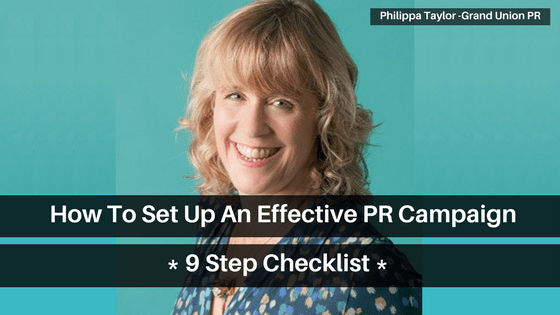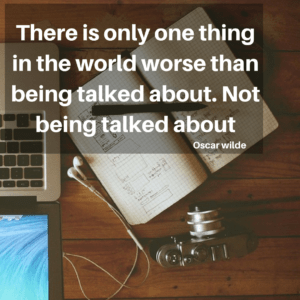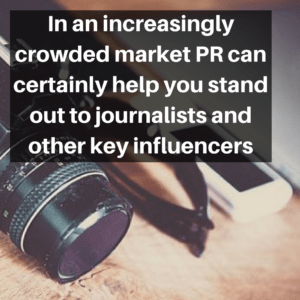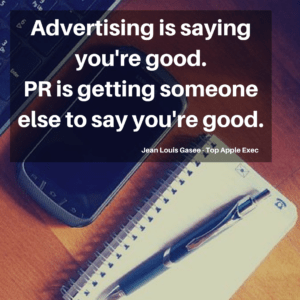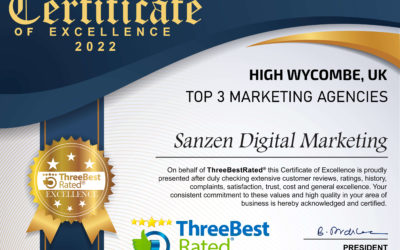A good PR campaign will do wonders for any business because communicating with your customers and polishing your reputation increases credibility; makes a business attractive to investors and potential partners; enhances SEO; and ergo – increases revenue!
So how does PR achieve all of this? By effectively reaching out to a company’s end users (often using a multi-channel approach) and sharing why your particular products or services will be of benefit – and what those benefits deliver to each user.
How PR can help:
- If your competitors are fighting for attention in the ads section of a magazine, focus on getting editorial coverage with the unspoken ‘endorsement’ of that media channel.
- If there is a recession or business is slow, being visible in print, on the TV, radio and on social media will help provide a competitive edge to survive the dip.
- If a business needs to move up the rankings with Google – good PR will boost its credibility with multiple write-ups across key sites and channels. And so on!
PR consultant Philippa Taylor from Grand Union PR, an agency specialising in lifestyle and wellbeing, highlights what every business needs to consider before embarking on a PR campaign. And she provides a helpful PR campaign checklist to tick off before investing valuable time and money.
Stop the press! PR is more than just a press release
‘’Initially when someone thinks of a PR campaign they tend to think of press releases’’ explains Philippa. ‘’And while a well written and targeted press release is a valuable part of any PR campaign; PR means much more. There is a range of communications tools that can be used including: expert features; product launches; community events; charity support; media sampling; and increasingly social media – especially videos.
“Consequently, a traditional press release issued machine-gun style to everyone on a media database is nowadays less effective. It’s all about knowing who your target audiences are, which media they consume and what the journalists in those media channels are looking for: tailor your information accordingly and you’ve got a much higher chance of gaining traction in the media.
 The first step I take when a client asks for a press release is to make sure that they have a robust story to tell and have all the supporting information and images ready so that an effective campaign which meets the company’s objectives can be put in place.”
The first step I take when a client asks for a press release is to make sure that they have a robust story to tell and have all the supporting information and images ready so that an effective campaign which meets the company’s objectives can be put in place.”
Does your business have a story worth telling?
Philippa stresses that in an increasingly crowded market PR can certainly help you stand out to journalists and other key influencers but you need to make sure that your story is worth telling.
”A good tip is to write down what you want your story to communicate (a paragraph is enough here) and then put yourself in your customers’ shoes. Ask yourself, “so what?”. If you need additional information to answer that question, rewrite the paragraph to include that information, until it couldn’t leave anyone asking themselves “so what”.
Another technique to use is to repeatedly ask yourself why about each point in your story. Why A? Because B. Why B? Because C. Why C? Because D, etc. Oddly enough, you often get to some deep truths this way and that helps to create a compelling story about your business.
Journalists will look at the bigger picture and how your company fits into this issue” she points out. ‘’Does the business have a compelling selling point? Are you an expert in your field? Do you have something new to share (such as research) or a new innovation perhaps? Or it could be to show the human side of a business or an interesting personality.
“My job is to make sure a client has in place what they need to make the right impression with journalists the first time. This is crucial, because if you’re not delivering the story in the right way, then they simply go onto the next story in the pile.
“It takes a lot of experience to create a story and being – let alone knowing who to contact and how to contact them! Small business owners can wear many hats and devoting time and energy to doing their own PR sometimes falls off their radar.
It’s more like cooking a casserole, than rustling up a stir fry
Finally, it’s important to note that PR should only be considered if a business wants to build relationships and brand reputation.
‘’ It’s more like cooking a casserole than a stir fry most of the time as you’re constantly building awareness by creating stories when a business has no ‘new news’. When there is something new to say, that’s when the heat gets turned up in terms of news value for a campaign’’ says Philippa.
‘’You need to commit both time and investment – but having said that – it doesn’t need to be expensive. The cost depends on what you want to do, who you want to reach and what you want these people to do or think differently as a result of your communication campaign.
When working with SMEs, I offer a PR Portal service which spreads the cost of a campaign over a number of months so that the front-loaded time/fee section of starting any campaign doesn’t impact too much on cash flow’’.
Philippa’s 9 Step PR Campaign Checklist
Before embarking on a PR campaign, it’s important to get clear on:
- Your objectives: why do you want PR? What do you want to achieve from it?
- Your story’s unique selling point: what makes you different? What is it that you want to shout about? If you do not have a USP – start developing one before you think about PR!
- Your Audiences: who do you want to talk to? Try to narrow it down so the message and story is targeted.
- Key messages: work on the main messages you want to get across.
- The call to action: what do you want them to think and do differently?
- Communication channels: outline who to contact (publications, websites, broadcast etc) based on which target audience you want to reach. And remember, the first point of call now for journalists is your website and social media channels – and if interested -they will check to see what you are saying on these platforms and how often. Don’t put the press information out via social media before you’ve spoken to your journalists or you’ll lose all the news value!
- Develop a media pack: have a background info pack of who you are and what you do, that is good enough to be shared with the media. Good quality images are vital so make sure you have a current headshot and both pack and lifestyle images of your products or services in action.
So does your business have a story perfect for PR? Why not shout about it in the comments section? It’s great PR 😀
If you would like to find out how Sanzen digital can help you grow and flourish online –just drop us a line!

